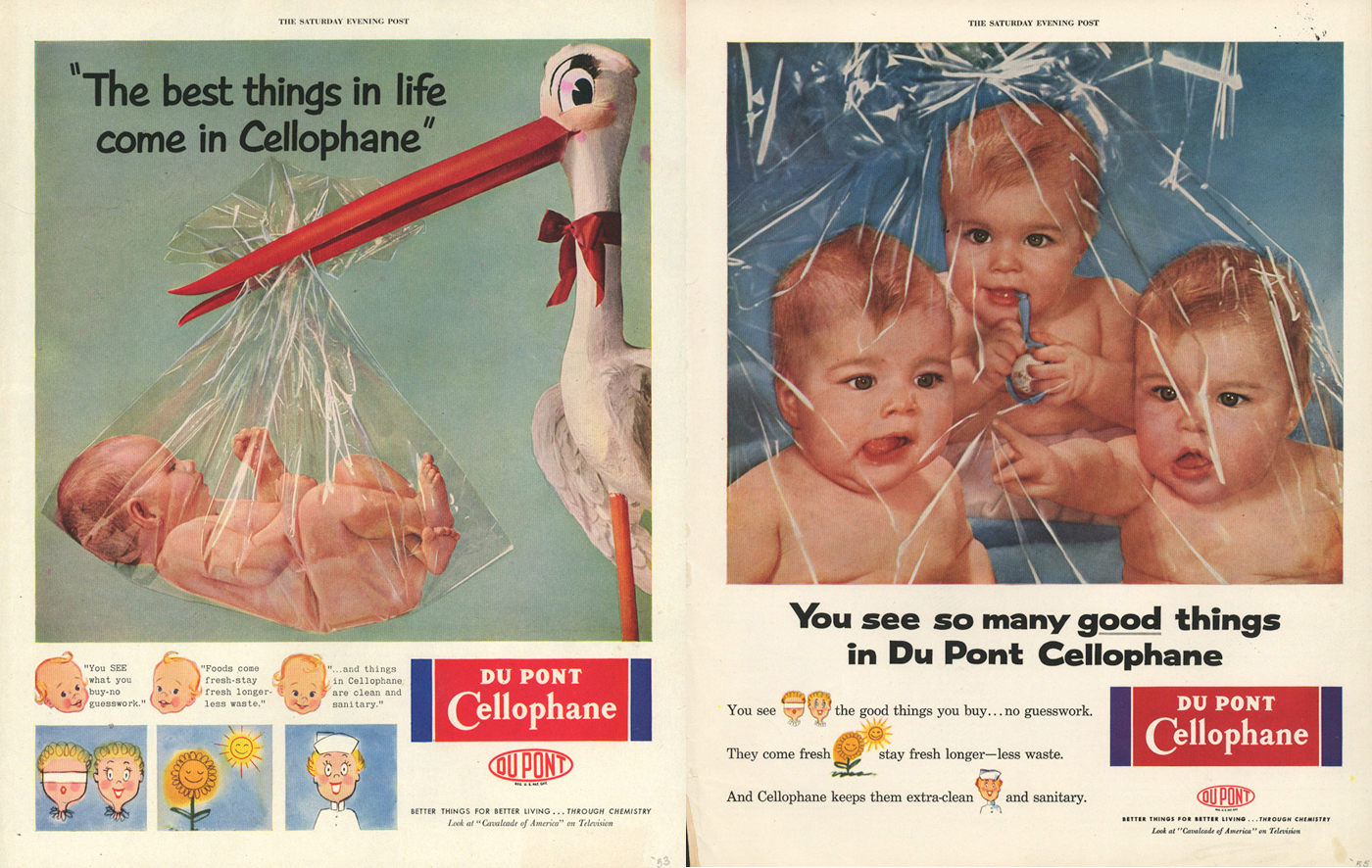“Plastics: A Way to a Better More Carefree Life,” House Beautiful 89 (October 1947): 141.
Roland Barthes, Mythologies, trans. Annette Lavers (New York: Hill and Wang, 1972), 98.
Ibid., 98.
Thelma R. Newman, Plastics As an Art Form (New York: Chilton Book Company, 1964), 30.
Of course plastics were developed in Europe and in other countries. This essay focuses only on the development of plastics in the United States in the twentieth century.
Newman, Plastics As an Art Form, 1.
See Judith Brown’s Glamour in Six Dimensions: Modernism and the Radiance of Form (Ithica, NY: Cornell University Press, 2009).
Susan Freinkel, “Our ‘Toxic’ Love-Hate Relationship With Plastics,” National Public Radio, April 19, 2011 →.
See Jeffrey Meikle, American Plastic: A Cultural History (New Brunswick, NJ: Rutgers University Press, 1995).
Tom Wolfe, The Electric Kool-Aid Acid Test (New York: Bantam, 1969), 292.
“How Your World Will Change,” New York Times, May 26, 1968.
Freinkel, “Our ‘Toxic’ Love-Hate Relationship.”
Forbon is a vulcanized and foldable paperlike plastic fiber created in the early 1900s by the NVF Company, later used in things like guitar strings.
Newman, Plastics As an Art Form, 196.
This machine aesthetic is also reflected in certain titles, like Dick Artschwager’s Dresser F45 (ca. 1960), emulating the serial logic of the assembly line.
It is remarkable how closely these works resemble the current fashion for 3-D printing, merely an updated and more automated version of these techniques. Newman, Plastics As an Art Form, 89, 20.
Hilton Kramer, “Plastic Toys and Ersatz Monuments,” New York Times, December 25, 1966.
The MoCC was at the time still located in New York.
But again, this has always been the case. Even with the pencil or pen, one shares creativity with the technology of writing. Hilton Kramer, “Plastic as Plastic: Divided Loyalties, Paradoxical Ambitions,” New York Times, December 1, 1968.
Freinkel, “Our ‘Toxic’ Love-Hate Relationship.”
Jeffrey L. Meikle, “Material Doubts: The Consequences of Plastic,” Environmental History 2:3 (July 1997): 291.
Freinkel, “Our ‘Toxic’ Love-Hate Relationship.”
The scene (not included in the book) was inspired by Buck Henry’s recollection of a lecture at Dartmouth College in the 1950s when he heard philosophy professor Eugen Rosenstock-Huessy refer to plastic as “a civilization that abandons its values.” Jay Boyar, "When ‘Plastics’ Became a Bad Word,” Washington Post, August 30, 1992.
Another problem is that when it was first administered in 1976, the TSCA grandfathered in all existing chemicals as “safe for use.”
S. L. Wright, R. C. Thompson, and T. S. Galloway, “The Physical Impacts of Microplastics on Marine Organisms: A Review,” Environmental Pollution 178 (2013): 483–492.
Ellen Gamerman, Wall Street Journal, September 26, 2008. See →.
Murray Gregory, “Environmental Implications of Plastic Debris in Marine Settings— Entanglement, Ingestion, Smothering, Hangers-on, Hitchhiking and Alien Invasions,” Philosophical Transactions B 364 (June 2009): 2013–2025; Martin Wagner, Magnus Engwall, and Henner Hollert, “(Micro) Plastics and the Environment,” Environmental Sciences Europe 26 (2014): 16.
Chris Jordan, Midway: Message from the Gyre (2011) →.
László Moholy-Nagy, Vision in Motion (Chicago: Paul Theobald & Co., 1947)
